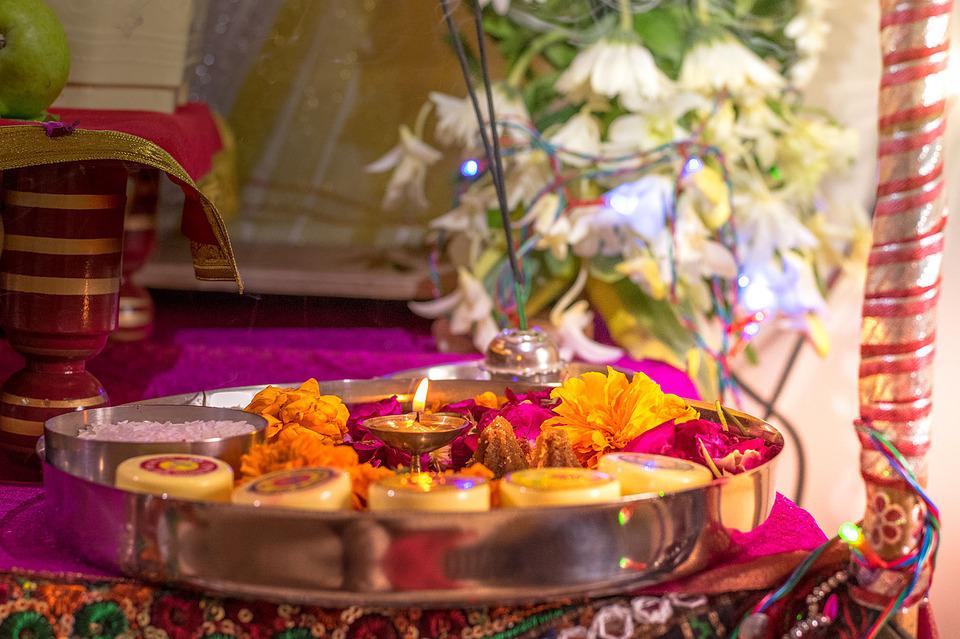
Most of the time, flower bouquet are used as decorations or gifts on religious occasions. They are either offered to gods or sit around altars in magnificent displays. Most people do not consider the purpose of using those particular flowers when they see the flowers on the altar. Each religion uses specific emblems. There are occasions when the meanings of objects or colors are the same across all religions. For instance, in Judaism, Islam, and Christianity, the color white stands for purity. Other times, two different religions will interpret the same symbol very differently. Almost every religion also uses flowers, which have a range of symbolic meanings. Although people may not often give the flowers they see during worship much thought, there is a long history of certain flowers and plants associated with particular religions.
Buddhism – Flowers
Online flower purchases have a significant religious significance in Buddhism. The lotus was a symbol of purity before the time of Buddha. A closed bud symbolised a folded soul with the ability to unfold and expose itself to the divine truth before achieving enlightenment. The flower steadily unfolds while concealing its middle, symbolizing enlightenment beyond the range of the average eye. The muck below that nourishes the roots is symbolic of our turbulent human lives, as we battle to find freedom and flourish within our existence. However, the flower grows while the stem and roots remain in the mud, where we continue to live our lives. One must have a lot of faith in oneself in addition to a tonne of effort to rise above. Therefore, in addition to purity and enlightenment, a lotus also represents faith.
Hinduism
Without flowers, a traditional Indian event is incomplete. They are primarily utilized as decorations and rituals to conclude larger festivities like weddings. It is because flowers are regarded as a symbol of fortune, they feel opulent, and they have a lovely scent. Both the bride and the venue are beautifully decorated with flowers. The bride wears flowers as part of her outfit.
To complete her bridal look, the bride adds flowers to her hair. Depending on the family and culture, a certain flower is used. For instance, in the majority of south Indian weddings, the bride decorates her hair with fresh jasmine, fake flowers, and gold ornaments. It alludes to a song honoring Krishna, the eighth manifestation of Vishnu. The flower garland that Radha, Krishna’s sweetheart, created is mentioned in the hymn. To make the garland, Radha used jasmine, holy basil, and its blooms.
Islam – Flowers
Compared to other major religions, Islam traditionally does not place as much emphasis on flowers. Roses and different types of palm leaves are occasionally chosen for use in weddings or funerals. In Arabic and Muslim cultures, roses have long been valued for their powerful fragrance. After the ritual, rose water is also poured on fresh graves in this regard. White flowers, in their entirety, are occasionally used as a virtue emblem. Jasmine is occasionally used during funerals as well.
Islamic art in sacred spaces is frequently decorated with various flower imagery and twisting floral designs. Citrus trees are included in Islamic gardens expressly for meditation because of their fragrant orange flowers. The black dye extracted and used on the skin and hair as a decoration is especially treasured from the Henna plant’s flowers and leaves. Before the wedding, the bride’s hands and feet are decorated with elaborate floral or geometric henna designs to signify fertility and fortune.
Christianity
Flowers used to be strongly connected with paganism and decadence in Christian culture. Since then, the perception of flowers as a whole has drastically changed. Passion flowers are a popular option to symbolize Christ’s suffering and sacrifice since each distinct element of the flower represents a different aspect of the Passion of Christ. The traditional symbol of purity is a bouquet of white roses and lilies. They have also made several references to the Virgin Mary, focusing on her innocence. Rose flower bouquet are viewed as a representation of either love or the blood of Christ. In addition to weddings, important occasions like baptisms and funerals also play a big part in the importance of flowers.
Chinese Religions – Flowers
Flowers are not just a symbol of beauty in Taoism and other Chinese folk religions but also of fertility, happiness, and life. White flowers are only used at funerals in Chinese culture because they are a symbol of death. At Chinese weddings, the color red has a profound and potent meaning. In Chinese culture, red represents love, joy, wealth, happiness, and ultimate delight. Red is used for wedding gift boxes, envelopes for financial gifts, and the bride’s bridal dress. Flowers like peonies, orchids, lotuses, and daffodils are frequently utilized at Chinese weddings.
The peony blossom represents spring and new life to the Chinese. The orchid is a perfect gift for weddings and is the Chinese emblem of love and fertility. For the Chinese, the lotus blossom symbolizes four Buddhist ideals (scent, purity, softness, and loveliness). The narcissus bloom is a springtime sign of transformation and the end of hibernation, making it the ideal flower for spring weddings. Daffodil and jonquil are among this cheerful flower’s other common names.
